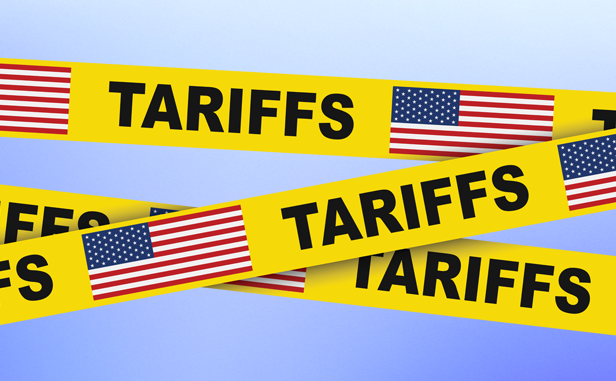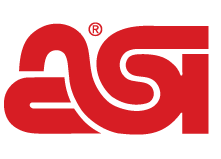News February 21, 2025
Public Comment Period Opens on Trump’s Potential ‘Reciprocal Tariffs’
The potential new levies could impact the promo products market and the American business marketplace much more broadly. The public has a chance to weigh in.
Key Takeaways
• Public Comment Period: The U.S. Trade Representative opened a public comment period to gather opinions on adjusting U.S. tariff rates to match those of other countries.
• Reciprocal Tariffs: President Donald Trump has said he wants to impose tariffs on countries equivalent to the duties they place on American exports.
• Economic Impact: Analysts warn that reciprocal tariffs could complicate global supply chains and increase costs for U.S. importers, including those in promo.
Got an opinion on President Donald Trump’s interest in imposing “reciprocal tariffs” on nations around the globe?
The federal government says it wants to hear it.

On Feb. 20, the Office of the United States Trade Representative (USTR) opened a public comment period as part of a study the president ordered that calls for USTR and the Commerce Department to evaluate how U.S. tariff rates could be adjusted to match current levies and trade barriers that other countries place on American exports to those nations.
Any U.S. individual, company or other organization with an interest has until March 11th to submit an opinion, which can be done online. For alternatives to online submissions, folks can contact Catherine Gibson, deputy assistant USTR for monitoring and enforcement, at 202-395-5725.
“These comments will assist the U.S. Trade Representative in reviewing and identifying any unfair trade or non-reciprocal foreign trade practices,” a notice announcing the public comment period said.
Trump is interested in imposing tariffs on countries that will match the duties those nations put on American exports to their lands. The levies the U.S. might impose could also steepen based on economic barriers a particular nation may have in place for American companies looking to do business within their borders, including regulatory requirements and subsidies.
“Whatever they charge, we’ll charge,” Trump said in discussing the contemplated levies.
“The prospect of country-specific tariffs creates significant logistical and supply chain issues for U.S. importers that source from around the globe.” DLA Piper
The president has said he views the reciprocal tariffs as a means of leveling the playing field for U.S. businesses. Analysts also speculate that the president may be using the threat of reciprocal tariffs as a type of sledgehammer negotiation tactic that would compel countries to lower tariffs, taxes and trade barriers they’ve imposed on American products.
How everything will play out remains uncertain. However, within 180 days of the president’s Feb. 13th memorandum ordering the reciprocal tariff study, the U.S. Office of Management and Budget must assess “all fiscal impacts” of the proposed actions and submit a report to the president.
Should Trump proceed on plans for reciprocal tariffs at scale, impacts could reverberate across global trade, affecting a broad range of industries, including the promotional products space. The vast majority of products promo sells in the United States are imported from overseas, particularly China and other Asian nations.
25%
The tariff rate President Trump could implement on imports from Canada and Mexico as soon as March.
“The prospect of country-specific tariffs creates significant logistical and supply chain issues for U.S. importers that source from around the globe,” wrote attorneys for global law firm DLA Piper in an analysis. “Moreover, the imposition of new tariffs is likely to prompt varying retaliatory measures from trading partners. This would create an intricate web of border measures that both complicate the cross-border shipment of goods, and would carry significant and varied cost implications for global supply chains.”
Reciprocal tariffs the U.S. might impose on other countries are not paid by foreign exporters or governments of other nations. They are paid by U.S.-based importers, including promotional products suppliers and distributors that source directly from overseas. As such, they can make importing – and thus imported products – more expensive.
ICYMI: The president didn't impose new #tariffs on a broad range of nations as many feared he would today; he did, however, order a study that would set the stage for doing so. Here's the latest and what some promo execs think of it: https://t.co/bPF4T0YxG2
— Chris Ruvo (@ChrisR_ASI) February 13, 2025
Some promo executives have said the reciprocal tariffs will invariably drive up promo product pricing domestically, complicate sourcing and have negative economic effects that diminish end-buyer investment in branded merchandise. Others think offsets – such as overseas factories dropping prices or currency changes – could help reduce impact. Others still think it’s too soon to say just what will occur given how much is in flux.
For sure, the president has been active since taking office when it comes to levies.
On Feb. 10th, Trump ratcheted up tariffs on steel and aluminum imports, prompting fears that promo product categories that contain the metals, like drinkware, are in line for price hikes. The new steel/aluminum tariffs are set to take effect next month.
What do the new #steel & #aluminum #tariffs mean for the #promoproducts industry? Price increases maybe, but suppliers are working to determine precise impacts.
— Chris Ruvo (@ChrisR_ASI) February 11, 2025
New Steel, Aluminum Tariffs Prompt Price Increase Fears for Drinkware, Other Promo Products https://t.co/5PW7383WIF
Trump has also imposed additional tariffs of 10% on China-made imports since taking office in January. He implemented and then suspended until at least March 4th tariffs of 25% on imports from Canada and Mexico; they remain very much a possibility, though could face legal challenges.
The president eliminated a loophole that allowed certain lower-value imports from China to enter the United States duty-free, but then suspended that order, which again allowed such tariff-free entries to occur. Trump has also threatened tariffs of 25% on autos, pharmaceuticals and chips.
The Trump administration is also considering imposing fees on Chinese shipping companies and any China-built vessel that enter ports in the United States – a move that, if made, would likely further increase importing costs.
Suppliers have said the tariff actions on China alone are likely enough to propel price increases on a spectrum of promotional products, particularly hard goods.
